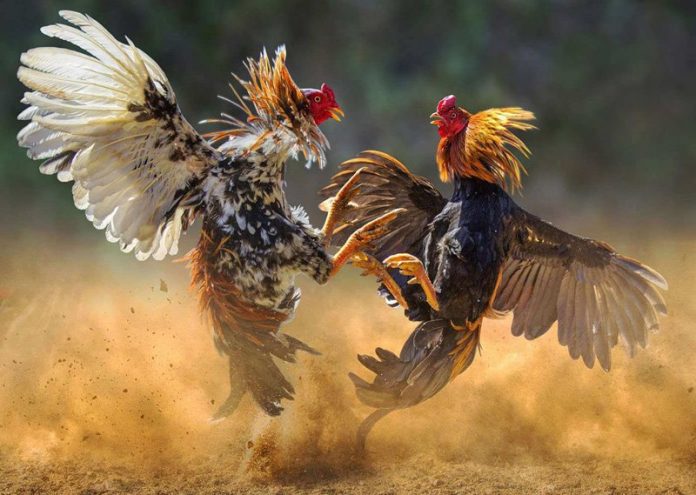Cockfighting and Animal Rights: A Controversial Dispute

The sport of cockfighting, a tradition filled with history and debate, puts fighting chickens in combat in a battle for dominance. With origins that trace back thousands of years, this blood sport has attracted both ardent fans and vehement opponents. In various cultures, cockfighting has been celebrated as a measure of breeding, preparation, and expertise. However, as society changes and Animal Rights advocates raise their voices, the clash between the allure of cockfighting and the moral imperative to protect animal welfare grows stronger.
The debate surrounding cockfighting raises profound questions about humanity's relationship with animals. For many, the sport embodies a deep cultural heritage and a connection to the land and communities that participate in it. On the flip side, the ethical implications of subjecting animals into brutal fights for spectacle highlight a growing awareness of animal suffering. This conflict not only reflects differing values and beliefs but also challenges us to question the practices that define our culture. As the struggle between heritage and compassion unfolds, the future of cockfighting remains uncertain, spotlighting the nuances of animal rights in a changing world.
The History of Cockfighting
Cockfighting has a extensive and rich history, tracking its origins back thousands of years. Ancient cultures such as the Greek, Romans, and Egyptian engaged in the activity, often perceiving it as a type of entertainment and a challenge of breeding and fighting skills. The earliest recorded evidence goes back to around 500 BC, where depictions of cockfights appeared in art and literature, signifying its societal significance in various societies.
As time progressed, cockfighting expanded across the globe, adapting to regional customs and regulations. In medieval Europe, particularly in the UK, the sport gained immense popularity among the aristocracy, where owning and breeding combat cocks became a mark of prestige. The establishment of formal regulations and breeding practices during this period laid the groundwork for the sport as a competitive sport. By the eighteenth century, it had become deeply entrenched in many cultures, with dedicated venues and significant fanfare surrounding events.
In the Americas, the sport found a strong presence, especially in the Caribbean and Southern United States. The sport was viewed as a showcase of talent and tradition, and many communities embraced the practice, frequently holding local contests and celebrations. However, as awareness of animal welfare issues grew throughout the twentieth century, the sport faced growing scrutiny and legal challenges, sparking a heated debate between supporters who view it as a cultural heritage and animal rights advocates who see it as inhumane and unjust.
Animal Rights Perspectives
Animal welfare advocates view cockfighting as a egregious violation of the rights and welfare of the birds involved. They argue that these creatures experience extreme physical and psychological pain during fights. The activity is seen as an exploitative and cruel form of entertainment that diminishes living beings to mere objects for human pleasure, disregarding their ability for suffering. Advocates call for the end of cockfighting, stressing the moral obligation to protect animals from harm.
Opponents of cockfighting also highlight the long-term consequences of the activity on both the animals and the broader society. đá gà rr88 The raising of fighting cocks often leads to genetic issues and health issues, both for the birds themselves and for the ecosystems in which they are raised. Furthermore, the underground nature of cockfighting can perpetuate a culture of violence and illegal betting, impacting communities and leading to further criminal activity. These issues amplify the argument for animal rights, framing cockfighting as not only inhumane but also harmful to the community.
Conversely, some proponents of cockfighting argue from a traditional perspective, asserting that it is a tradition embedded in certain cultures. They stress the historical importance and the bond formed between humans and animals through this practice. However, animal rights advocates dispute this viewpoint, arguing that cultural traditions should evolve with a growing understanding of animal sentience and welfare. This clash highlights the tension between preserving cultural practices and advancing animal rights, creating an enduring debate that complicates the discourse surrounding cockfighting.
Lawful and Ethical Implications
The legality of cockfighting differs significantly across regions, with some countries completely prohibiting the activity, while others allow it under regulated conditions. In the US, for example, federal law prohibits cockfighting, and many states have implemented strict punishments for participants and spectators. However, certain regions still allow rooster fighting in designated arenas under specific guidelines. This legal patchwork creates chaos and complicates efforts to enforce animal welfare standards consistently.
Morally, cockfighting poses serious questions regarding animal rights and the treatment of animals. Advocates against cockfighting argue that it is fundamentally cruel, as it subjects birds to brutal conditions for human amusement and profit. They contend that the suffering endured by the animals conflicts with modern values of empathy and respect for living beings. Supporters of cockfighting, however, often justify it as a cultural tradition that promotes social ties and bonding among participants, challenging the universal rejection it faces.
The ongoing discussion around cockfighting highlights the clash between cultural practices and the evolving perceptions of animal rights. As societies advance in their understanding of awareness and the morally appropriate treatment of animals, the acceptance of activities like cockfighting continues to decline. This transition pushes for a reevaluation of established norms and encourages legislators to consider new legislation that better aligns with contemporary views on animal welfare and cruelty.
